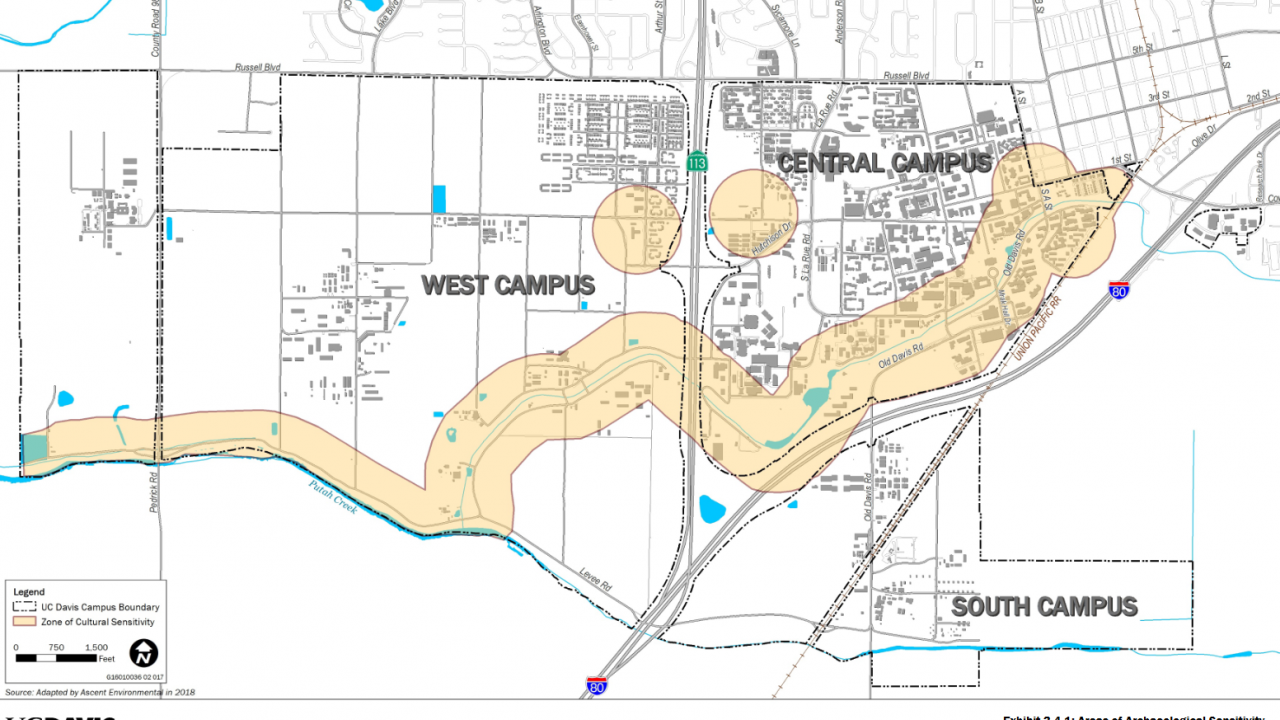
Protecting Artifacts While Excavating
As Big Shift construction crews routinely dig eight-foot deep, four-foot wide trenches, there are a few important factors to consider including the existing pipe infrastructure, the health of nearby trees and the protection of cultural resources.
One of the goals identified in the 2018 Long Range Development Plan is the conservation of "cultural resources for future generations." Environmental Planner Heather Davis has coordinated efforts to make sure Big Shift construction upholds this goal.
"Prior to the arrival of Euroamericans in the region, Patwin were known to have lived along the banks of Putah Creek in the vicinity of the campus, and for thousands of years, this land has been the home of Patwin people," Davis said.
One important action that was taken before any digging was done was providing cultural awareness training for the contractors and construction crew.
"The trainings covers why cultural preservation is important, legal requirements related to protecting cultural resources, types of artifacts and features that may be encountered and what to do if the crew runs into those items during construction activities," Davis said.
The training was conducted by a consulting archaeologist and a tribal monitor from the Yocha Dehe Wintun Nation, who also serve as cultural monitors to the project. Currently the monitors are present during excavation, walking through the trenches, and checking excavated soil to search for any signs that there may be cultural resources present. One of the major indicators is soil coloration and composition, which could signal that there may be historical or prehistorical artifacts to be encountered. Depending on factors like location and soil composition and previously monitored areas, this monitoring will be constant during certain portions of construction.
"The Davis Campus Long Range Development Plan Environmental Impact Report identifies areas of archaeological sensitivity on campus. As construction approaches these areas, cultural monitoring will increase and broaden to include soil augers before any construction starts," Davis said.
During active construction, what the crew and monitors might discover will not be publicized, to preserve the site, for one, and to respect the wishes of Native American tribes for whom such discoveries are very personal.
Even as the Big Shift moves the campus into the future, it is important to respect and preserve cultural resources of the past.
